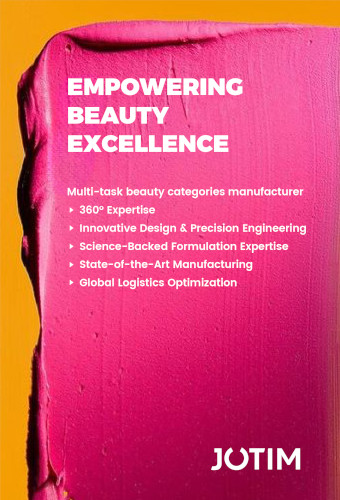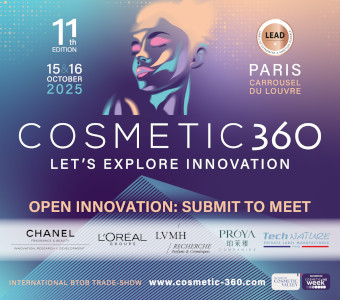
Customization
Helga Hertsig-Lavocah, Trend Manager at Hint Creative Consultancy, deciphered the agro-food industry, which abounds with concepts that it seems could be adapted to the cosmetics industry. The democratization of 3D printing offers unprecedented individualization perspectives. Practises such as adding a dose of actives or transforming a product through a mixture are increasingly used in the tin and drink departments, with launches such as Shake Me by William Saurin or Teavana® Shaken Iced Teas.

Chrono-cosmetics and natural harmony
Nature is more than ever an important source of inspiration. “We are getting beyond products stuffed with natural ingredients to turn towards seasonal concepts that can adapt to the skin’s specific needs in spring, summer, autumn, or winter, as can be seen with Dong Fang Ji Dao or Arimino Mint Shampoo. In addition, recovering a healthy, depolluted skin by imitating what Nature does best in this field constitutes a strong quest in Asia, but also in most large cities throughout the world. Specific ingredients like garlic, detoxifying mushrooms, or the lotus flower are getting widely used for their renowned depolluting action,” explains Florence Bernardin, the founder of Info & Inspiration.

Communities revolution
Today’s consumers, and in particular younger generations, are revolutionizing the buying act. “Women consumers look for disinterested opinions and advice on the Internet before they buy. Blogs’ influence on purchases is stronger than the women’s press: up to 23% compared to 7%. The democratization of the Do It Yourself also encourages women to watch tutorial videos and learn how to put on their makeup or do their hair. There are 14 million beauty videos on YouTube, and influential people such as Michelle Phan gather up to 7 million followers, whereas brands, despite a strong presence on the market, reach only 500,000, at best,” underlines Géraldine Cohen, founder of social shopping website The Beautyst.

In the USA, the NYX makeup brand reached a turnover of 100 million dollars in ten years by investing neither in the media, nor in advertising, nor in offers. It is an example of success of a pure digital company, and it has just been bought out by L’Oréal.

Older consumers
On the other hand, women consumers are aging: “one woman out of two is now aged 50 or more,” explains Stéphane Soudillat, of Little Less Conversation. And “86% of them claim they don’t understand ads and conclude they must not be destined for them. Yet, the buying power of this age group is of 87 euros per year for a face care product: that’s 15 euros more than women aged 40-59 and 47 euros more than the 25-39 age group.”
Whether in Asia or North America, a few great players in the cosmetics industry have already seized the opportunities arising from these new demands by offering innovative products and unique marketing concepts. To be continued…



































